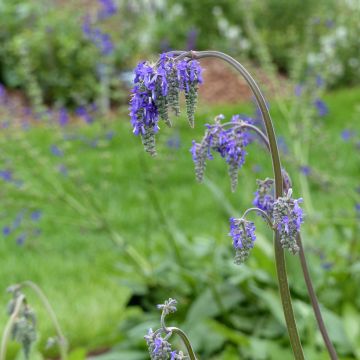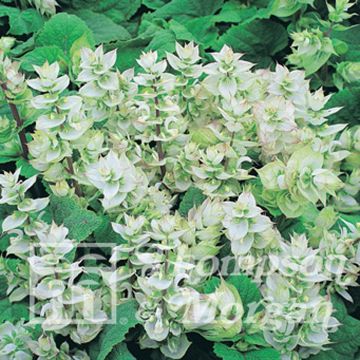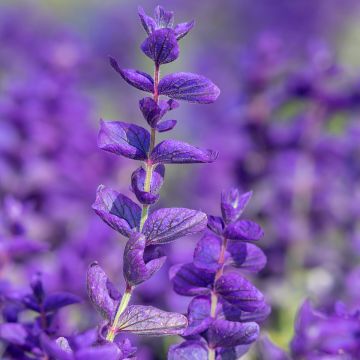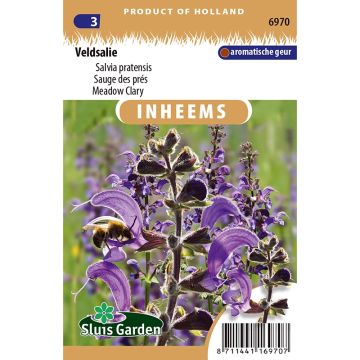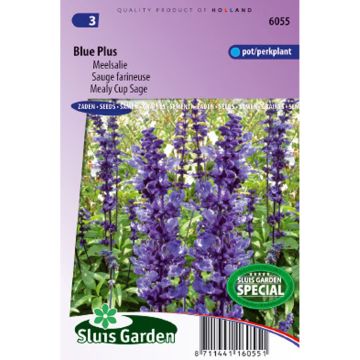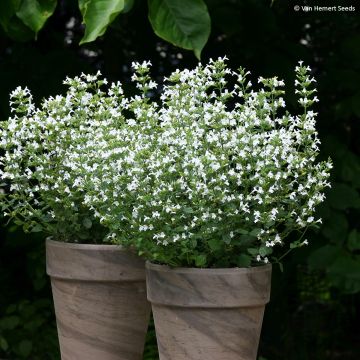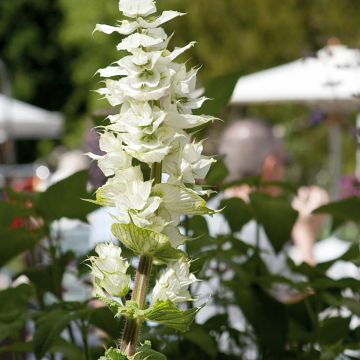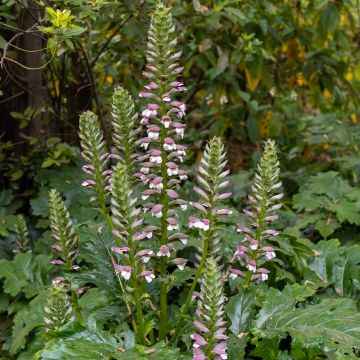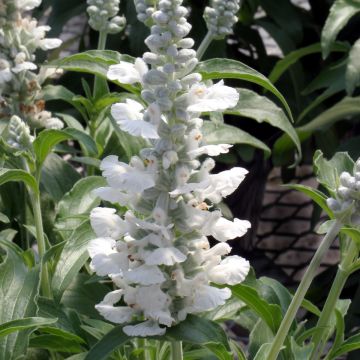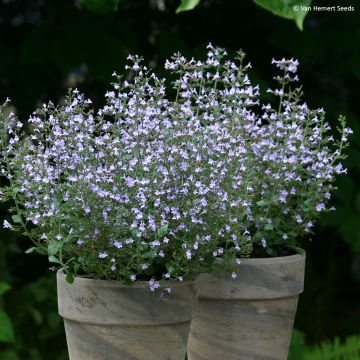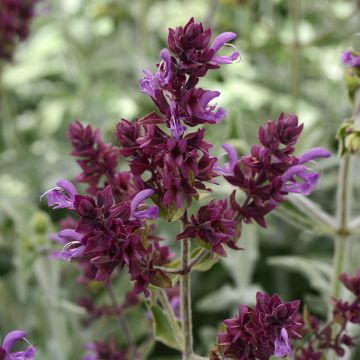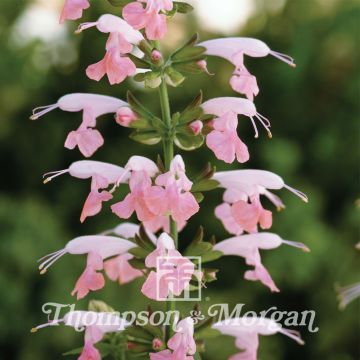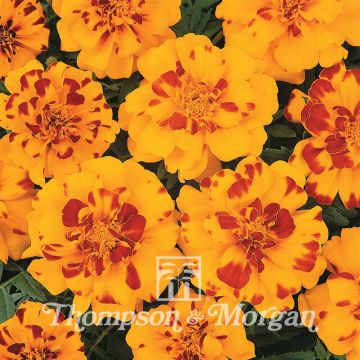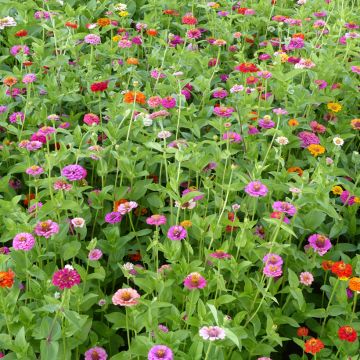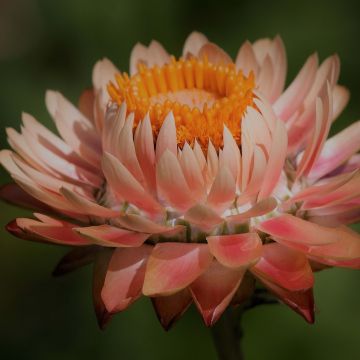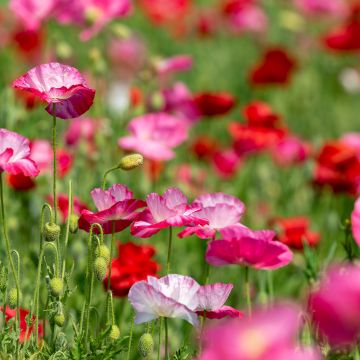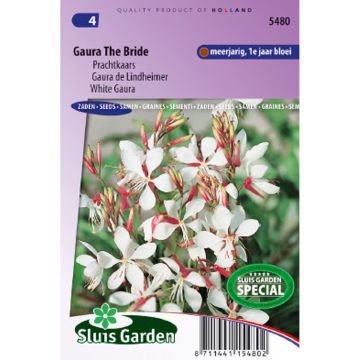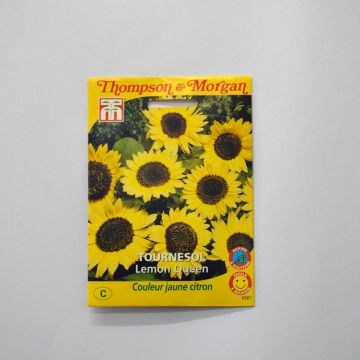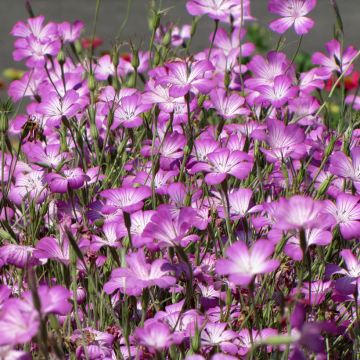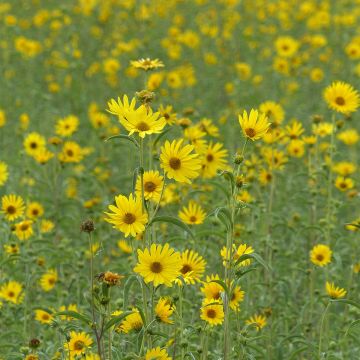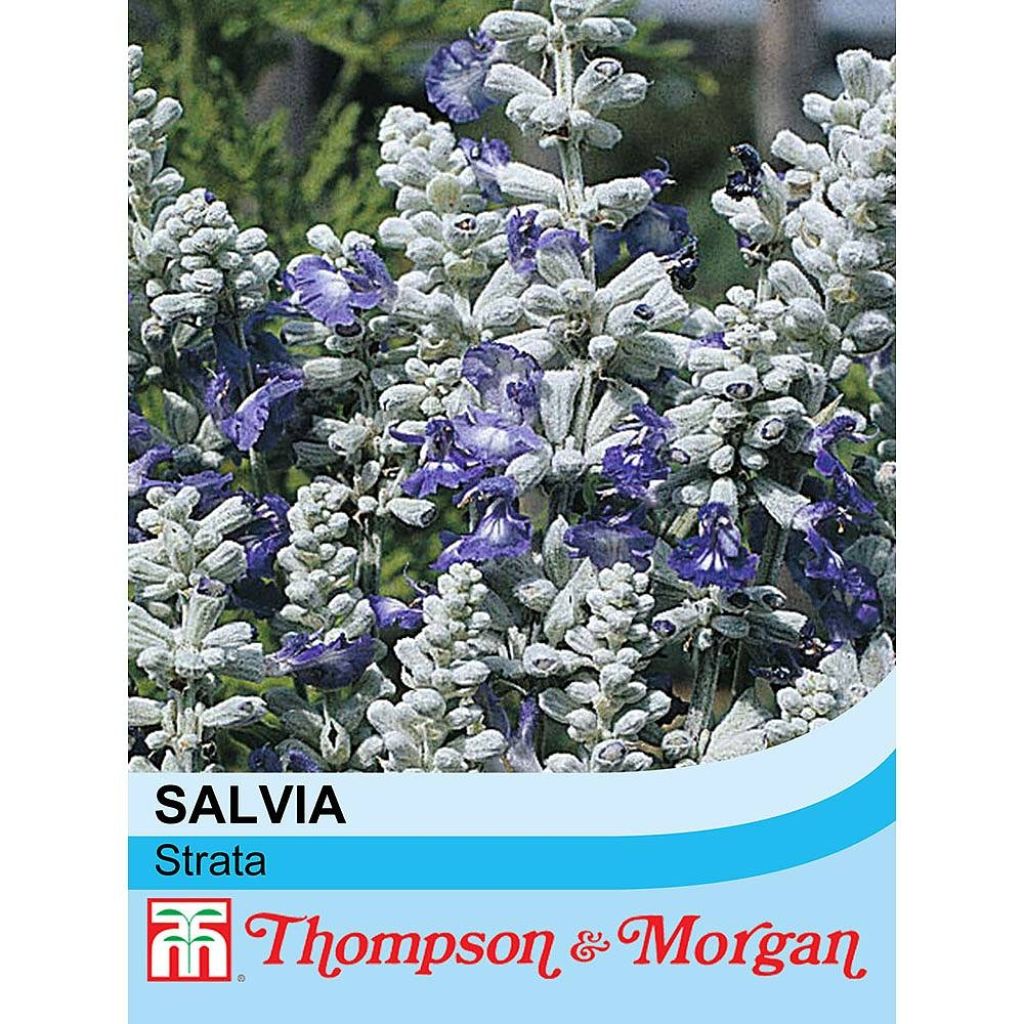

Salvia farinacea Strata
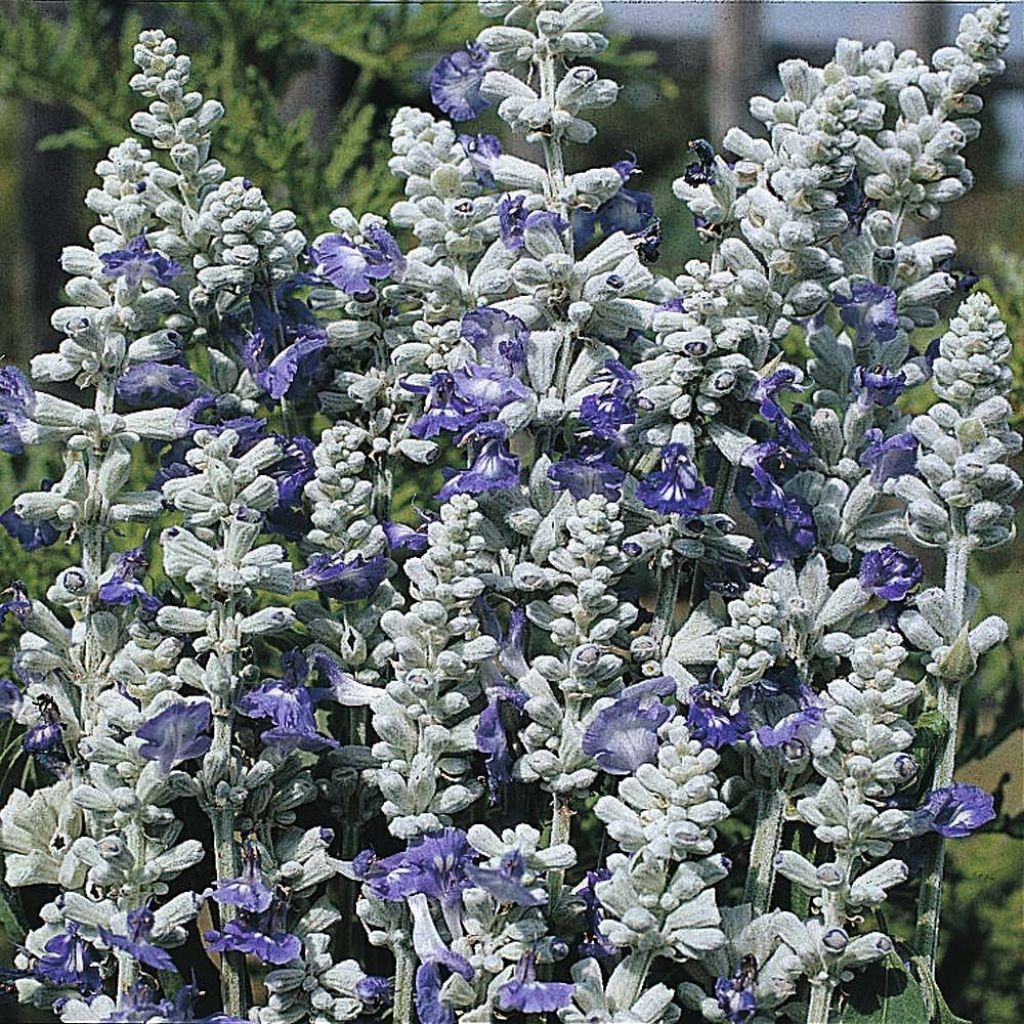

Salvia farinacea Strata
Salvia farinacea Strata
Salvia farinacea Strata
Why not try an alternative variety in stock?
View all →This plant carries a 6 months recovery warranty
More information
We guarantee the quality of our plants for a full growing cycle, and will replace at our expense any plant that fails to recover under normal climatic and planting conditions.
Seed-only orders are dispatched by sealed envelope. The delivery charge for seed-only orders is €3.90.
Delivery to Corse prohibited: UE law prohibits the import of this plant from mainland France to Corse as part of the fight against Xylella fastidiosa. Please accept our sincere apologies.
More information
Does this plant fit my garden?
Set up your Plantfit profile →
Description
Salvia farinacea 'Strata' is a new variety of sage that has been awarded by Fleuroselect for the innovative colouration of its flowering. From summer to autumn, it produces generous pale grey spikes adorned with bi-coloured flowers instead of solid ones. They boast a beautiful deep blue lip with a white tip, emerging from bracts covered in a very light velvet. The overall effect offers a particularly soft, bright, and refined colour combination. Seed-grown plants are compact and very uniform, making a great impression in sunny borders and containers. Perennial in its native lands, this sage is grown as an annual in most of our regions, except in warm areas.
Salvia farinacea is a perennial plant native to Texas and Mexico. Like all salvias, to the Lamiaceae family. Its limited hardiness and fast growth make it an excellent annual in most of our climates. The 'Strata' cultivar has an upright and bushy habit, forming tufts measuring 45cm (18in) tall when in flower with a spread of 40cm (16in). The plant forms bouquets of somewhat purplish stems covered in fuzz and adorned with slightly greyish dark green foliage. The lanceolate leaves are aromatic when crushed. They are slightly toothed, and covered on the underside with a whitish fuzz. From June to October, erect and flexible spikes appear, covered in small white hairs. The spikes are adorned with bilabiate flowers of an intense blue highlighted with white. Mealycup sages get their name from their stems covered in a light bloom.
'Strata' will be perfect in a border, planted with roses, marigolds, fuchsia-coloured shrubby salvias, or rudbeckias. It will enhance large-flowered peonies, emphasising their romantic side. It can also be combined with grasses (pennisetum, stipa), gauras, and the silvery foliage of wormwoods. Easily create a beautiful blue and yellow scene by pairing it with Heliomeris 'Sunsplash', a very floriferous small sunflower. Also consider zinnias and South African daisies (arctotis, osteospermum) in shades of pink and orange to accompany its blue spikes. This plant can be used to edge pathways. It can be planted among silver mound (Cerastium tomentosum), which will carpet its base in a gentle harmony of muted tones. It will create beautiful displays in containers on patios, with anthemis or diascias, for example. Its lavender-like spikes hold up well in a vase.
Report an error about the product description
Flowering
Foliage
Plant habit
Botanical data
Salvia
farinacea
Strata
Lamiaceae
Cultivar or hybrid
Other Salvia seeds
Planting and care
Sow in February/March on the surface of good seed compost. Make sure the compost is moist but not waterlogged. Seal in a transparent plastic bag until germination, which usually takes 2-3 weeks at 18 to 25°C (64.4 to 77°F). Expose the seedlings to light, which is beneficial for germination.
Transplant when the plants are large enough to handle, into 8 m (3in) pots, and let them grow in cooler conditions. Gradually acclimatise them to outdoor conditions for 10-15 days before planting in the garden, after all risk of frost has passed. Space them 30cm (12in) apart. Choose a sunny location. Plant your young plants in ordinary, well-worked and prepared soil.
You can also directly sow them in place after the last frost.
They thrive in fertile, moist, well-drained, well-cultivated soils in full sun or partial shade.
Sowing period
Intended location
This item has not been reviewed yet - be the first to leave a review about it.
Flower seeds
Haven't found what you were looking for?
Hardiness is the lowest winter temperature a plant can endure without suffering serious damage or even dying. However, hardiness is affected by location (a sheltered area, such as a patio), protection (winter cover) and soil type (hardiness is improved by well-drained soil).

Photo Sharing Terms & Conditions
In order to encourage gardeners to interact and share their experiences, Promesse de fleurs offers various media enabling content to be uploaded onto its Site - in particular via the ‘Photo sharing’ module.
The User agrees to refrain from:
- Posting any content that is illegal, prejudicial, insulting, racist, inciteful to hatred, revisionist, contrary to public decency, that infringes on privacy or on the privacy rights of third parties, in particular the publicity rights of persons and goods, intellectual property rights, or the right to privacy.
- Submitting content on behalf of a third party;
- Impersonate the identity of a third party and/or publish any personal information about a third party;
In general, the User undertakes to refrain from any unethical behaviour.
All Content (in particular text, comments, files, images, photos, videos, creative works, etc.), which may be subject to property or intellectual property rights, image or other private rights, shall remain the property of the User, subject to the limited rights granted by the terms of the licence granted by Promesse de fleurs as stated below. Users are at liberty to publish or not to publish such Content on the Site, notably via the ‘Photo Sharing’ facility, and accept that this Content shall be made public and freely accessible, notably on the Internet.
Users further acknowledge, undertake to have ,and guarantee that they hold all necessary rights and permissions to publish such material on the Site, in particular with regard to the legislation in force pertaining to any privacy, property, intellectual property, image, or contractual rights, or rights of any other nature. By publishing such Content on the Site, Users acknowledge accepting full liability as publishers of the Content within the meaning of the law, and grant Promesse de fleurs, free of charge, an inclusive, worldwide licence for the said Content for the entire duration of its publication, including all reproduction, representation, up/downloading, displaying, performing, transmission, and storage rights.
Users also grant permission for their name to be linked to the Content and accept that this link may not always be made available.
By engaging in posting material, Users consent to their Content becoming automatically accessible on the Internet, in particular on other sites and/or blogs and/or web pages of the Promesse de fleurs site, including in particular social pages and the Promesse de fleurs catalogue.
Users may secure the removal of entrusted content free of charge by issuing a simple request via our contact form.
The flowering period indicated on our website applies to countries and regions located in USDA zone 8 (France, the United Kingdom, Ireland, the Netherlands, etc.)
It will vary according to where you live:
- In zones 9 to 10 (Italy, Spain, Greece, etc.), flowering will occur about 2 to 4 weeks earlier.
- In zones 6 to 7 (Germany, Poland, Slovenia, and lower mountainous regions), flowering will be delayed by 2 to 3 weeks.
- In zone 5 (Central Europe, Scandinavia), blooming will be delayed by 3 to 5 weeks.
In temperate climates, pruning of spring-flowering shrubs (forsythia, spireas, etc.) should be done just after flowering.
Pruning of summer-flowering shrubs (Indian Lilac, Perovskia, etc.) can be done in winter or spring.
In cold regions as well as with frost-sensitive plants, avoid pruning too early when severe frosts may still occur.
The planting period indicated on our website applies to countries and regions located in USDA zone 8 (France, United Kingdom, Ireland, Netherlands).
It will vary according to where you live:
- In Mediterranean zones (Marseille, Madrid, Milan, etc.), autumn and winter are the best planting periods.
- In continental zones (Strasbourg, Munich, Vienna, etc.), delay planting by 2 to 3 weeks in spring and bring it forward by 2 to 4 weeks in autumn.
- In mountainous regions (the Alps, Pyrenees, Carpathians, etc.), it is best to plant in late spring (May-June) or late summer (August-September).
The harvesting period indicated on our website applies to countries and regions in USDA zone 8 (France, England, Ireland, the Netherlands).
In colder areas (Scandinavia, Poland, Austria...) fruit and vegetable harvests are likely to be delayed by 3-4 weeks.
In warmer areas (Italy, Spain, Greece, etc.), harvesting will probably take place earlier, depending on weather conditions.
The sowing periods indicated on our website apply to countries and regions within USDA Zone 8 (France, UK, Ireland, Netherlands).
In colder areas (Scandinavia, Poland, Austria...), delay any outdoor sowing by 3-4 weeks, or sow under glass.
In warmer climes (Italy, Spain, Greece, etc.), bring outdoor sowing forward by a few weeks.

































